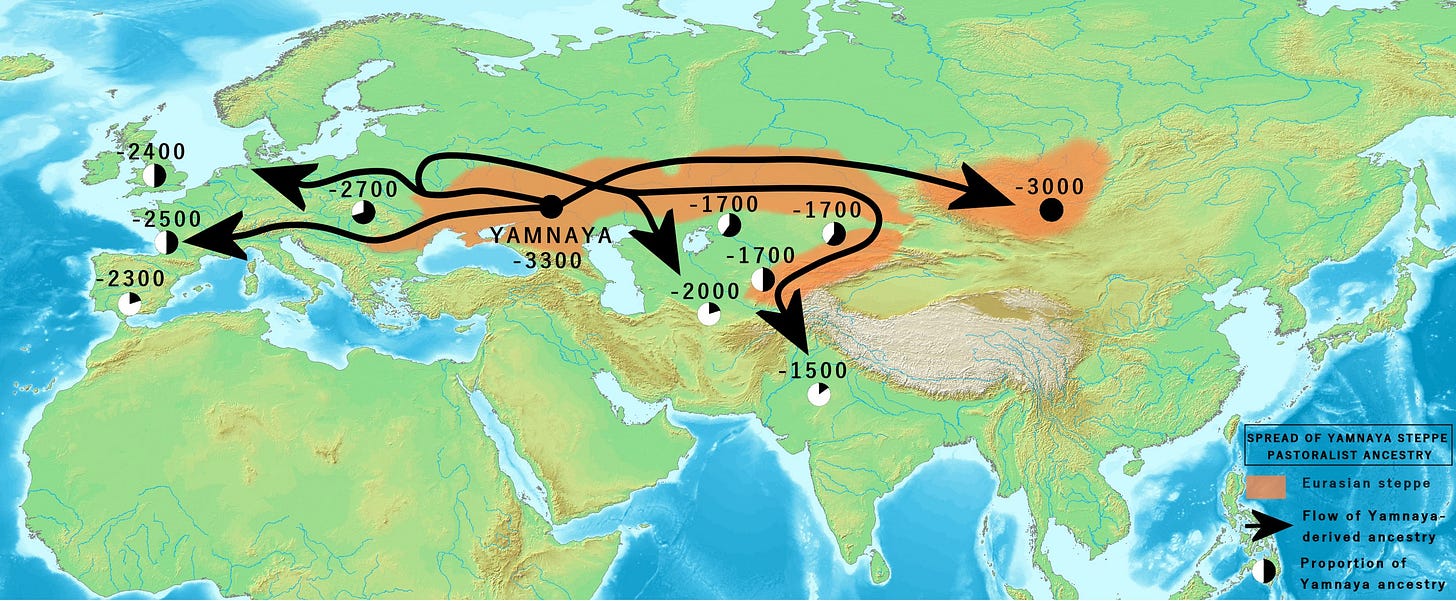Why Europeans Owe Their White Skin To Immigration, According To Science
How Two Waves Of Migration Gave Europeans The Light Skin They Have Today
Agriculture’s impact on humankind is incredibly hard to overstate.
The advent of agriculture was a real game-changer that had many knock-on effects, effectively changing what it means to be human, starting with our DNA.
Analyzing DNA from ancient humans shows that agriculture likely arrived in Europe around 8,000 to 10,000 years ago. Prior to this, three main groups of people dominated the continent. These were the Western Hunter Gatherers (WHG), Eastern Hunter Gatherers (EHG), and the Scandinavian Hunter Gatherers (SHG). Modern genetic analysis reveals that all three groups are likely to have had darker skin colouring —similar to that observed in Cheddar Man.
Scientists can tell the skin colour of ancient people by comparing the DNA of these ancient people with the DNA of modern populations at specific loci that correspond to the genes that determine skin pigmentation.

In the case of Cheddar Man, preserved DNA was extracted from the inner ear bone and genetic markers for skin pigmentation were found that were usually associated with sub-Saharan DNA. It’s also through these sequences that we know that Cheddar Man had blue eyes, which aligns with what we know about when blue eyes appeared in our evolutionary history— relative to light skin.
The interesting thing… is that these Hunter Gatherer populations had been around Europe for a relatively long period of time… first arriving 35,000 to 40,000 years ago. Yet… in all those thousands of years… they still maintained a darker skin complexion. It was only when agriculture arrived, that we start seeing a shift in the archeological record towards lighter skin tones.
Agriculture was introduced into Europe by a group of people known as the Neolithic farmers, who originated in the Near East in the area around Anatolia (modern-day Turkey). These farmers started off dark-skinned, but eventually became the first “light-skinned” Europeans, leading to the theory that it was the advent of agriculture that selected for light skin (rather than UV light).
Farmed foods are typically lower in Vitamin D than foods that are hunted.
It’s likely that these early neolithic farmers experienced Vitamin D deficiency, which favoured individuals with lighter skin tones that could better absorb Vitamin D from the sun — essentially providing an alternative source.

Thousands of years later, the descendants of these lighter-skinned Anatolian farmers and dark-skinned Hunter Gatherers experienced a second wave of skin lightening due to the arrival of the very light-skinned Yamnaya pastoralists from modern-day Ukraine. This happened around 3,500 BC to 4,000 BC.
In other words, European light skin is really due to a combination of two waves of migration. The first wave of migration was the arrival of the lighter-skinned Anatolian farmer… who likely acquired their light skin due to diet-induced Vitamin D deficiency. The second wave of migration occurred with the arrival of the pastoralists, who brought in more light skin alleles — as well as the alleles for lactose tolerance and the alleles for greater height.
It’s unclear why and how the Yamnaya Pastoralists acquired their very light skin, as Ukraine still receives a fair amount of sunlight and these ancient people were unlikely to be deficient in Vitamin D as their diet had high levels of Vitamin D. One theory suggests the very light skin of the Yamnaya Pastoralists may have been the result of intense social structuring and engineering.
In any case, it feels appropriate to end this blog by reminding Europeans (who seem to be increasingly hellbent on voting in xenophobic far-right parties and politicians) that they owe their skin colour to two waves of migration.





